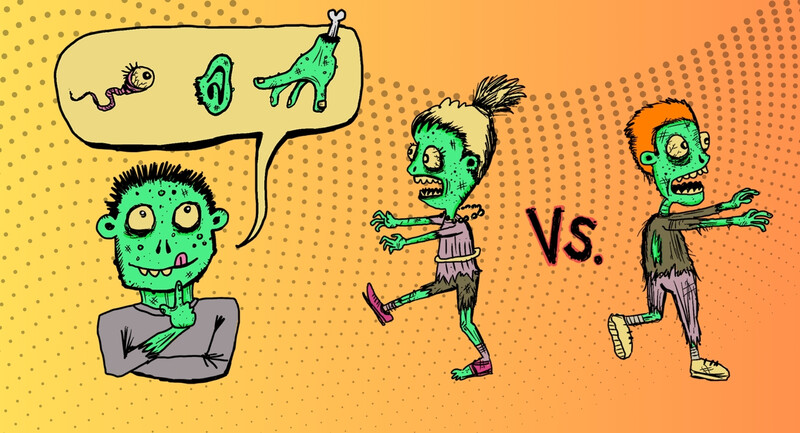Language is the essential classroom tool, especially in mathematical applications. It’s how students process and remember information. But the kind of language defined as mathematical discourse is more nuanced than other classroom discussions. Teaching students how to think, read, write, and speak like mathematicians is how they truly learn math—it becomes something more than the rote memorization of facts and formulas.
When mathematicians engage with math or problem solving, they do more than simply look at a problem and solve it. They view problems through a mathematical lens and engage in purposeful and collaborative expression of internalized processes—mathematical discourse is a way to make invisible thinking visible. If we are to create and activate mathematicians of the future, we need to stop teaching math the way it’s been done for the past 150 years. Instead, we need to empower students to think and communicate mathematically—to become conversant in mathematical discourse.
The key to mathematical discourse is a shift that takes place in the role of the teacher from giver of knowledge to facilitator of thinking, enabling students to take ownership of their learning. This, in turn, allows students to make conjectures, connect prior knowledge to current understanding, reason mathematically, and refine and amend problem-solving approaches.
Meaningful mathematical discourse is, in fact, one of a list of eight effective mathematics teaching practices, as defined by the National Council of Teachers of Mathematics (NCTM). These best practices are:
- Establish mathematics goals to focus learning
- Implement tasks that promote reasoning and problem solving
- Use and connect mathematical representations
- Facilitate meaningful mathematical discourse
- Pose purposeful questions
- Build procedural fluency from conceptual understanding
- Support productive struggle in learning mathematics
- Elicit and use evidence of student thinking
The list may look abstract and daunting, but we can achieve these goals by creating a discourse-rich classroom. And doing so doesn’t add to teachers’ tasks—it accelerates and enhances the work that they are already doing.
Building a Discourse-Rich Classroom
A discourse-rich classroom is only possible when we build and nurture relational capacity, the level of trust and safety between student and teacher. By building a culture that celebrates mistakes and takes academic risks, teachers can create what we think of as an ideal learning space. Classrooms where students are both safe and brave, where inquiry, curiosity, and learning to fail forward are integral to learning.
In these classrooms, students work together to problem solve. They are taught to welcome mistakes and to use them as learning points to articulate what they understand and what points of confusion they still have. Right or wrong, they express their thought processes to gain a stronger understanding of the concept.
Strategies for Scaffolding Discourse
As starting points, consider three strategies—developed by the nonprofit AVID (Advancement Via Individual Determination), for which we both work—to begin integrating mathematical discourse in your classroom. Easy to implement and actionable, these strategies provide a launch pad for weaving mathematical discourse into your classroom practice. They can serve to create a culture of belonging, where students understand that the classroom is a safe space to make mistakes.
1. Use academic language scripts to provide students with the formal language needed to engage in academic discourse. Intentionally embed opportunities for students to use the language of math to describe their thinking about math. Examples include:
- I attempted to answer this problem by _________.
- I discovered ________ while answering this problem.
- I am wondering ________.
- I chose a (graphic/verbal/algebraic) representation because _______.
- I was not sure how to represent the problem because _________.
- First I thought _________, but now I know ________.
- I started to solve the problem by doing _______ because _______.
- I need to know _________ before I can ___________.
2. Create communal word banks of high-leverage, content-specific academic vocabulary to assist students in expressing their mathematical thinking. Word banks should be visible, accessible to students, and collaborative. They anchor and support the mathematical content students are currently learning. A communal word bank in a 4th grade classroom could include:
| add | algorithm |
| formula | equation |
| compare | data |
| digit | formula |
It is important that students and educators both add to the word bank throughout instruction. The word bank could be housed on a wall, in notebooks, in a collaborative digital document, or anywhere that students can readily access. This passes ownership to the students, creating a new awareness of the language of math, and accessible scaffolds supporting using the language of math.
3. Celebrate the use of mathematical language. Design opportunities within lessons and daily interactions for students to begin to use scaffolds—like language scripts, sentence frames, and word banks. Acknowledge and celebrate their bravery in trying new words and describing their thinking using the language of math.
- For example, have the class snap their fingers in a finger snap celebration when a student uses academic vocabulary.
- Or have the class celebrate with two stomps and a clap when a student expresses themselves using an academic language script.
- Coach students to celebrate each other when they hear peers using mathematical language: “Great job your brain is growing!”, motioning a hammer hitting a nail and saying, “Nailed it!”
When students are able to express their thinking and problem-solving strategies, they make deeper, more meaningful connections to content. When they feel empowered to ask questions, to make mistakes and to celebrate new ways of thinking, they become more confident in how they approach mathematics.
And when discourse is intentionally built in the math classroom, they learn how to talk and think like mathematicians.








